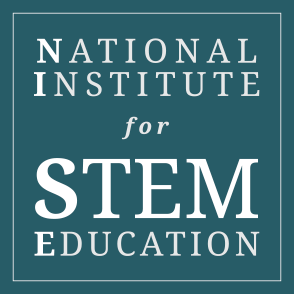STEM needs and opportunities in education and the workplace continue to expand exponentially in the United States. In the past 16 years, STEM jobs increased by 26 percent compared to six percent across all occupations. Meanwhile, the comparatively low rates of STEM graduates require U.S. employers to rely on skilled foreign workers. The reality to be confronted is that educators -- and I include myself here -- are not yet developing the workforce needed to fill our country's STEM needs today or in the future. As a result, our graduates are not prepared to grasp the many STEM opportunities available to them.
At the same time, STEM occupations are, and will continue to be, among the top-paying positions in the nation. In 2013, workers in STEM occupations earned a median annual wage of $76,000 --- compared to a median annual wage of $35,080 for all workers (Occupational Outlook Quarterly, Spring 2014.) The bottom line is: Career positions in STEM fields are plentiful, financially lucrative, and increasing at a much faster pace than other occupations, yet there are not enough American workers to fill them.
Part of the problem may be the lack of a clear and shared definition of STEM. Most people know the acronym stands for Science, Technology, Engineering, and Mathematics. However, expert content skills are only the beginning. Integrating knowledge across content areas is an important next step. Beyond that, employers need innovative self-starters who are tenacious in tackling problems. When one approach does not work as anticipated, they use failure as a stepping-stone to try again until success is achieved. They understand the value of strong communication and collaboration skills, and they seek out input and feedback from others to achieve the most effective and efficient solutions possible. Thus, STEM is larger than an initiative. It is the mindset of a lifelong learner, a content expert who also demonstrates the soft skills so critical to employer's success.
While STEM needs and opportunities receive a lot of press in both the scientific and mainstream media, the need for more and higher level STEM instruction for both educators and students continue. The National Institute for STEM Education (NISE) is meeting the need by preparing teachers and campuses to prepare STEM graduates. Using curricula originally developed by Rice University, NISE professional development integrates current STEM research and best practices in two programs leading to STEM certification for teachers and campuses.
In its professional development programs, NISE is implementing these four strategies to elevate the quality of STEM instruction:
- Focus on the 15 teacher actions that matter. Research consistently shows that, of all the factors that affect learning outcomes, teachers have the greatest impact. Instructions matter, so focus on that.
- Provide user-friendly, relevant, and extended professional development. The NISE Teacher and Campus Certificates are 100 percent online, take place over several months at convenient times for teachers and/or schools, and include a minimum of 40 hours of learning. Research has repeatedly shown that at least 40 hours of professional learning are necessary to significantly change educator's behavior.
- Provide expert help when it is needed. Dedicated, experienced, online STEM experts support both the Teacher and Campus Certificates. STEM coaches provide feedback to teachers' work submissions and proactively collaborate with the school's assigned STEM liaison throughout the campus certification process.
- Focus on "how" to teach to maximize STEM learning. A successful STEM classroom-- or school -- isn't just about the content; it's about how that content is taught. In fact, a key part of STEM is the interdisciplinary nature of the four subjects. To weave together a rich and meaningful learning environment, it is essential to take advantage of the similarities and interplay of skills and knowledge among science, technology, engineering, and mathematics.
Teachers in other disciplines can also benefit from using a STEM approach. Many NISE participants are language arts and social studies teachers who want to integrate STEM strategies into their classrooms and integrate instruction across the curriculum. These "non-stereotypical STEM" teachers are reinforcing students' development of a STEM mindset and strengthening the school's overall STEM culture.
Creating graduates aligned with STEM needs and opportunities
To align STEM graduates with our country's needs and opportunities, we must first align STEM teachers and schools with the strategies and resources needed to produce strong STEM graduates. The National Institute for STEM Education welcomes the opportunity to partner with schools, districts, and states to create realistic plans to ensure our students' place in the worldwide STEM future.
